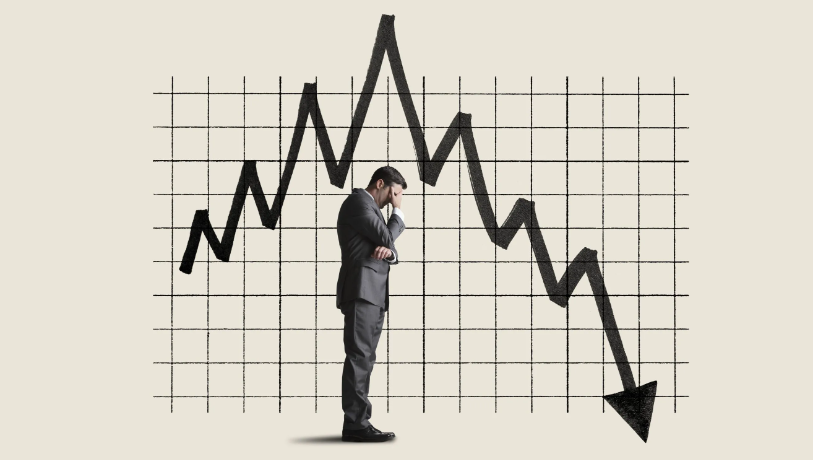
A recession in the US…..!?
- जुलाई 7, 2022
- 0
Last month Deutsche Bank (DB) became the first major investment bank to predict an outright recession in the US by the end of 2023. The bank expects the European Union to follow suit in 2024. While other investment banks are now raising the probability of a US recession, DB remains the only one with a US recession as its base case.
Economists at DB have also recently come out with another report outlining the downside risks to their already bearish view. They are convinced that all the risks to their recession call in 2023 are skewed to the downside and the report makes for scary reading.
They basically make the point that inflation will be far higher and stickier than what most market participants expect. Therefore, to break the inflation cycle, rates will have to rise much faster and higher than what most market participants anticipate and this will trigger a recession. They do not buy the soft landing argument and think that very tight employment data and strong consumer balance sheets will actually force the federal Reserve to tighten by more to slow the economy and curtail demand. Strong consumer balance sheets make the task of slowing the economy to control inflation more difficult.
On why inflation will continue to surprise to the upside, they make the following points. First of all, several structural disinflationary forces have begun to reverse, be it globalization, demographics and the cost of production in China or the need for higher cost alternative energy to tackle climate change.
Second, inflation is now being driven by rising costs, as strong demand comes up against a creaky supply chain that is unable to deliver on time, in the quantity needed. The labour market is hyper tight and will only worsen in 2022, as some of the labour supply disruptions seem structural. This implies that wage inflation, already higher than levels consistent with the Fed’s inflation objective, will only accelerate further. Rental costs will also accelerate as they still have a long way to go to catch up with surging property values.
Third, inflation psychology has shifted. Markets are getting used to seeing 7-8 per cent inflation prints across the world. Despite surging costs, corporate profits are doing fine, implying that the cost are being passed through and accepted by end buyers. Price increases are not getting pushed back.
Fourth, while longer-term inflation expectations have till now been restrained, they are rising. Inflation expectations are cyclical and heavily influenced by your most recent experience. If inflation were to remain elevated, there is a good chance expectations will also rise and create further pressure on the Fed.
The scenarios outlined in the report are scary and will bring markets down further. The critical assumption remains that inflation is much more embedded than the Fed or its models believe. If the folks at DB are right on this core assumptions, their scenarios are internally consistent. The Fed will have to raise faster and by more than consensus, and this will tip the US economy into a recession sometime in the next 12-18 months.
Ultimately every policymaker will be data driven. The inflation data over the coming 6 months has never been more critical. Markets will key off these numbers. Let’s hope we all get a break and the numbers undershoot.
अमेरिका में आर्थिक मंदी के संकेत….. !?
गत माह डॉयचे बैंक (डीबी) पहला बड़ा निवेश बैंक है जिसने कहा की 2023 के अंत तक अमेरिका में मंदी आ जाएगी। बैंक ने अनुमान जताया कि 2024 तक यूरोपीय संघ भी उसी स्थिति में पहुंच जाएगा। अन्य निवेश बैंक जहां अमेरिकी मंदी की संभावना बता रहे हैं, वहीं डीबी इकलौता ऐसा बैंक है जो बुनियादी तौर पर कह रहा है कि अमेरिका में मंदी आएगी ही।
डीबी के अर्थशास्त्रियों ने हाल ही में एक अन्य रिपोर्ट पेश की है जिसमें उनके पहले से मंदी वाले नजरिये को लेकर और जोखिम को रेखांकित किया गया है. उन्हें पूरा यकीन है कि 2023 में आने वाली मंदी को लेकर कही जा रही उनकी बात से जो भी जोखिम जुड़ा है उसका झुकाव गिरावट की और है और यह रिपोर्ट भयभीत करने वाला है।
उनका कहना है कि मुद्रास्फीति काफी अधिक रहेगी और बाजार की अनुमान की तुलना में यह ज्यादा अप्रिय भी होगी। ऐसे में मुद्रास्फीति के चक्र को ध्वस्त करने के लिए दरों में अधिकांश बाजारों के अनुमान की तुलना में तेज इजाफा करना होगा तथा इससे मंदी आएगी। उनका मानना है कि रोजगार के आंकड़े तथा मजबूत उपभोक्ता बैलेंस शीट फ़ेडरल रिज़र्व को विवश करेगी कि वह और अधिक कड़ाई बरते जिससे अर्थव्यवस्था में धीमापन आएगा और मांग कमजोर होगी। मजबूत उपभोक्ता बैलेंस शीट, मुद्रास्फीति पर नियंत्रण के लिए अर्थव्यवस्था में धीमापन लाने के काम को और कठिन बना देती है।
मुद्रास्फीति बढ़ोतरी के साथ चौंकाती क्यों रहेगी इस बारे में वे निम्न बातें कहते हैं.सबसे पहली बात, कई ढांचागत अवस्फीतिकारी ताकतों की वापसी शुरू हो गयी है. फिर चाहे वह वैश्वीकरण हो, जनांकीय ढांचा और चीन में उत्पादन लागत हो या जलवायु परिवर्तन से निपटने के लिए वैकल्पिक ऊर्जा की उच्च लागत हो।
दूसरा, मुद्रास्फीति अब बढ़ी लागत के कारण तेज हो रही है क्योंकि मांग मजबूत है और आपूर्ति श्रृंखला समय पर आपूर्ति नहीं कर पा रही. श्रम बाजार की हालत आगे और बिगड़नी है क्योंकि श्रम आपूर्ति की कुछ दिक्कतें ढांचागत है।
तीसरा, मुद्रास्फीति का मनोविज्ञान बदल गया है. दुनिया भर के बाजारों में यह 7-8 प्रतिशत है. बढ़ती लागत के बावजूद कारोबारी मुनाफा बेहतर है. इससे पता लगता है कि लागत का बोझ अंतिम उपभोक्ता पर डाला जा रहा है।
चौथा, दीर्घकालिक मुद्रास्फीतिक अनुमान अभी भी सीमित हैं लेकिन उनमे इजाफा हो रहा है. ये अनुमान चक्रीय प्रकृति के होते है और ताज़ा अनुभवों से काफी प्रभावित होते है. यदि मुद्रास्फीति ऊँची बनी रहती है तो काफी संभावना है कि फ़ेडरल रिज़र्व पर दबाव और बढ़े।
रिपोर्ट में जो परिदृश्य बताया गया है वह डराने वाला है तथा उसके कारण बाजारों में और गिरावट आएगी। अहम अनुमान यही रह जाता है कि मुद्रास्फीति फेड अथवा उसके मॉडलों की तुलना में अधिक रूढ़ है. यदि डीबी का आकलन सही है तो कह सकते है कि उनके द्वारा प्रस्तुत परिदृश्य में निरंतरता है. फेड को दरों में तेजी से इजाफा करना होगा और इससे अमेरिकी अर्थव्यवस्था 12 से 18 महीनो की अवधि में मंदी की शिकार हो सकती है।
अंततः हर नीति निर्माता डेटा के आधार पर काम करता है. आने वाले छह महीनो को देखे तो मुद्रास्फीति के डेटा बहुत संकटपूर्ण नहीं नजर आ रहे है. बाजार इन आंकड़ों का शमन कर देगा। आशा करनी चाहिए कि आंकड़े इतने ऊँचे नहीं होंगे और हमे राहत मिलेगी।

![]()
































































